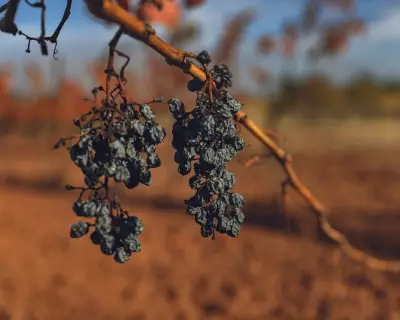
For many of us, the weekly supermarket trip is a routine part of life. However, the most environmentally conscious food choices might not be found on those familiar aisles. The global food system is a significant contributor to climate change, responsible for roughly a third of all human-caused greenhouse gas emissions, according to the EDGAR FOOD database.
This impact is compounded by a staggering level of waste. The U.S. Department of Agriculture estimates that about a third of the American food supply is lost or wasted, often for superficial reasons like imperfect size or colour. This has prompted a growing number of consumers to seek out less wasteful alternatives.
"There’s a whole breadth of opportunities to purchase food," explained Julia Van Soelen Kim, a food systems adviser with the University of California Cooperative Extension. With holiday periods like Thanksgiving leading to larger food shops and a bigger potential climate impact, exploring these options becomes even more crucial.
The Community Supported Agriculture (CSA) Box
One long-standing alternative is Community Supported Agriculture, or CSA. Jane Kolodinsky, a professor emerita at the University of Vermont, has sourced her vegetables this way for three decades. Members pay a farm a fee at the start of the harvest season and receive a weekly box of produce, often picked up directly from the grower.
The environmental benefits are clear. "There's a smaller carbon footprint for purchasing locally compared to global or national food distribution channels," said Van Soelen Kim. "When they’re local, they’re traveling less distance, so less gas, less fuel." Seasonal, local produce also typically requires less energy for cold storage, which can also mean lower costs.
While not entirely pollution-free, CSAs bypass many steps in the complex supermarket supply chain. The trade-off is a need for flexibility, as your shopping list must adapt to what is currently in season, shifting from apples to pears to kiwis throughout the year.
The Farmers' Market Advantage
For those seeking more choice, the farmers' market offers a direct line to local growers. As the oldest alternative food system, it allows consumers to buy seasonal produce with minimal processing and packaging directly from the people who cultivated it.
This model also plays a vital role in cutting down on waste. Customers at farmers' markets are generally more accepting of produce that isn't a uniform shape or size. "Less waste means more efficient utilization of all the resources that farmers are putting out to produce that crop in the first place," noted Timothy Woods, a professor of agribusiness at the University of Kentucky.
Delivery Services for 'Ugly' and Surplus Produce
A more modern solution comes from services like Misfits Market, which deliver groceries that supermarkets typically reject. These 'misfits' might be onions that are too small or carrots that grew two roots—vegetables that are perfectly safe and tasty to eat but don't meet strict cosmetic standards.
These services tackle food waste head-on, though their overall climate impact depends on delivery logistics. Abhi Ramesh, founder and CEO of Misfits Market, stated his company minimises emissions by using set delivery days to batch orders together, reducing van journeys. He acknowledges that for seasonal, hyper-local food, a CSA or farmers' market is hard to beat, but his service provides a year-round solution for saving surplus produce from being wasted.
The overarching advice from experts for any shopping channel remains the same: eat seasonally, choose local where possible, and look for minimal packaging to make your grocery shop a more climate-friendly endeavour.





